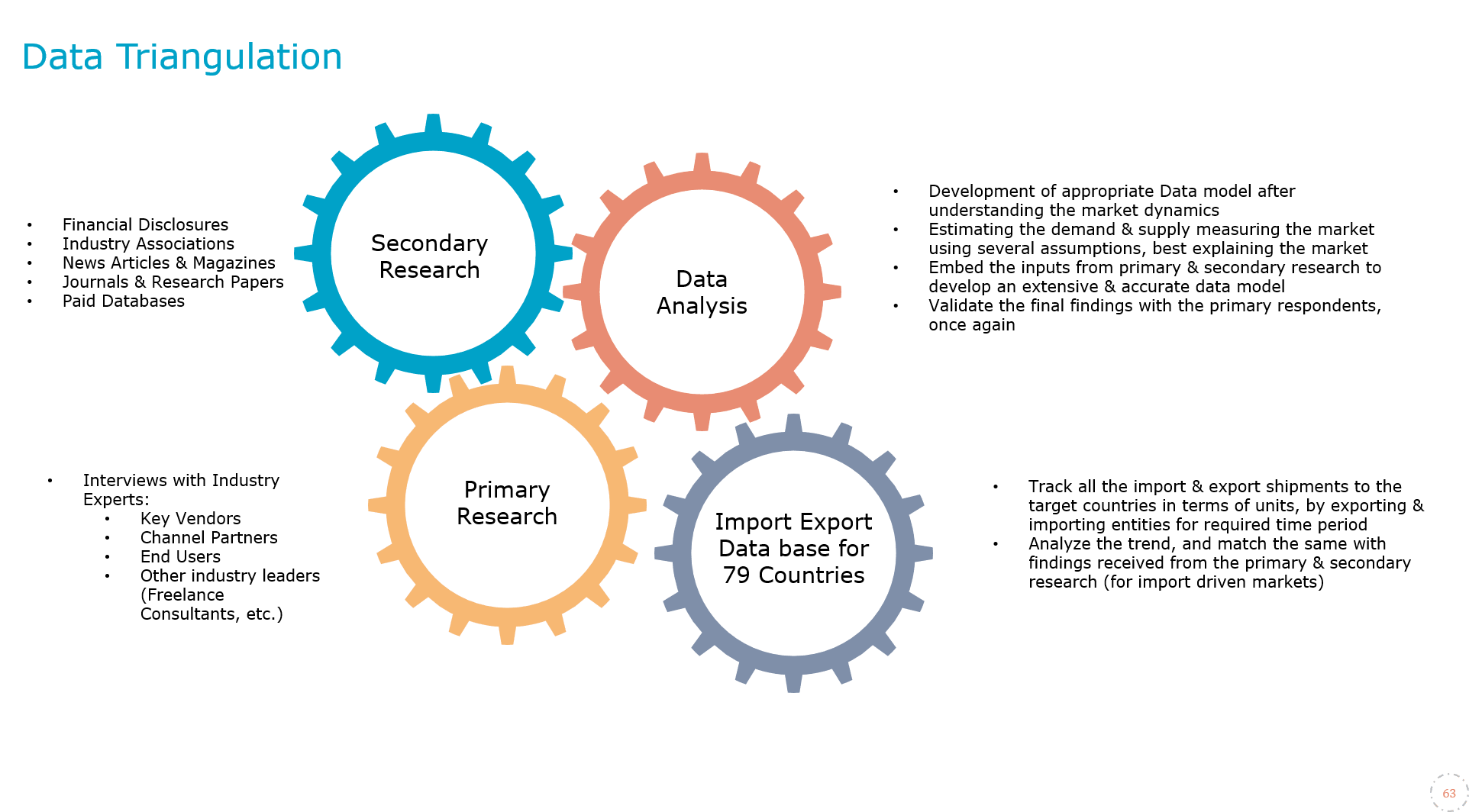
Global Carbon Credit Trading Market Research Report: Forecast (2024-2030)
Global Carbon Credit Trading Market Report - By Type (Voluntary, Compliance Based), By End User Industry (Energy, (Power generation, Oil and gas, Renewable Projects), Manufacturing... and Heavy Industry, (Cement, Steel, Chemicals, Others), Transportation, (Aviation, Marine, Automobile OEMs), Forestry and Agriculture, Others)), By Type of Enterprises (Large Enterprises, Medium & Small Enterprises), and Others Read more
- Environment
- Jul 2024
- Pages 173
- Report Format: PDF, Excel, PPT
Market Definition
Nations, business entities, and other bodies can lower their greenhouse gas emissions through the sale & purchase of carbon credits. Such sale & purchase of carbon credit is done through a market-based system, which is termed carbon credit trading. The main aim of this carbon trading is to achieve overall emission reductions cost-effectively by encouraging investments in cleaner technologies and practices.
Market Insights & Analysis: Global Carbon Credit Trading Market (2024-30):
The Global Carbon Credit Trading Market size is estimated to grow at an impressive rate during the forecast period, i.e., 2024-30. Many elements are driving the growth & expansion of the carbon credit trading industry. The primary force at the back of the market growth is the increasing awareness about the negative impacts of climate change and the urgent need to reduce greenhouse gas (GHG) emissions globally. Global agreements just like the Paris Agreement have set challenging goals to decrease carbon emissions, encouraging nations and businesses to look to find low-priced means of accomplishing these dreams. By presenting a market-based system that lets businesses purchase and sell carbon credit, carbon buying and selling allows them to comply with emission standards.
Additionally, economic incentives play a crucial role in augmenting the size & volume of the Carbon Credit Trading Industry. Leading companies can generate extra revenue by selling extra credits they earn when their emissions go below the assigned threshold. This makes carbon trading an economically viable venture in addition to motivating businesses to invest in sustainable practices. Another important factor is the expansion of energy efficiency and renewable energy projects, which are frequently financed by the sale of carbon credits and produce credits that are exchangeable on the market.
Regions around the world are witnessing a continuous boom in the demand for carbon credit trading due to rising ranges of greenhouse gas (GHG) emissions, contributing to an international temperature boom & full-size environmental influences. Thus, to shrink greenhouse fuel (GHG) emissions, governments of different countries are actively transitioning in the direction of low-carbon economy strategies, thus fueling the demand & supply of carbon credits in the market. For instance:
| Report Coverage | Details |
|---|---|
| Study Period | Historical Data: 2019-22 |
| Base Year: 2023 | |
| Forecast Period: 2024-30 | |
| Regions Covered | North America: US, Canada, Mexico |
| Europe: Germany, The UK, France, Spain, Italy, Scandinavia | |
| Asia-Pacific: India, China, South Korea, Japan, Southeast Asia , Rest of Asia-Pacific | |
| South America: Brazil, Argentina, Rest of South America | |
| Middle East & Africa: GCC, Africa | |
| Key Companies Profiled | Intercontinental Exchange, Inc., Xpansiv, Carbonex, EEX Group, AirCarbon Exchange, Carbon Trade Exchange, CME Group, Climate Impact X, Carbon Place, Planetly, Toucan, EnKing International, ClimateTrade, Carbon Credit Portal, Flow Carbon, and others. |
- In 2020, Japan announced the "2050 Carbon Neutral Declaration" to achieve virtually zero CO2 emissions. To achieve this target, companies are moving towards decarbonization, and with the judicious use of carbon credits, this can be done smoothly.
- In 2023, the Indian government declared that it planned to implement a carbon credit trading scheme by 2026.
There is a bright market outlook for further growth & development but the fluctuating price of carbon credits hinders the pace of market growth. Several political and economic aspects are leading to the fluctuations in carbon credit prices that need to be addressed immediately to maintain a healthy environment for market growth & expansion during the forecast period.
Global Carbon Credit Trading Market Driver:
Stringent Government Regulations & Policies Driving Market Growth – The carbon credit trading industry is growing & witnessing impressive revenue growth as a result of strict government policies and regulations. Around the world, governments are enforcing strict environmental laws to mitigate the negative impacts of greenhouse gas (GHG). These strict regulations frequently involve mandatory emission reduction caps and targets, forcing companies to come up with practical solutions to comply. Carbon credit trading enables companies to effectively adhere to these regulations without facing additional costs. Organizations that cut their emissions below the mandated levels can earn from selling their extra carbon credits, while those that offset their emissions and stay under the established limits can do so by acquiring carbon credits.

A strict regularity framework stimulates enterprises to invest in sustainable practices and greener technology. Therefore, strict government regulations and laws are key factors in developing a healthy carbon trading market, increasing the demand for carbon credits, while inspiring greater numbers of individuals to get involved in the fight against climate change.
Global Carbon Credit Trading Market Challenge:
Volatile Carbon Credit Prices to Impede Market Growth & Expansion – A major hurdle for the growth of the carbon credit trading industry is the fluctuating price of carbon credits. Several factors may result in substantial swings in the price of carbon credits, including changes in laws, economic conditions, political decisions, and changes in market supply and demand, etc. Due to this unpredictability, market players and investors find it difficult to think ahead and commit to long-term investments in emission reduction initiatives. For example, if the price of carbon credits drops unexpectedly, businesses would find it less feasible to engage in offset projects or green technology, which would undermine the size & volume of the Global Carbon Credit Trading Market.
The development of a stable and effective carbon trading system can be made more difficult by the unpredictable character of carbon credit pricing, which can also discourage new players and lower total market liquidity. To address this volatility and make sure the carbon trading market can serve long-term environmental goals, strong regulatory frameworks, greater market transparency, and price stabilizing tools are required. Therefore, with the help of proper remedial tools, steady revenue growth can be maintained in the Carbon Credit Trading Industry.
Global Carbon Credit Trading Market Trend:
Integration of Blockchain & AI Gaining Traction – One of the emerging trends in the carbon credit trading industry is the integration of blockchain and AI, which is revolutionizing the monitoring, verification, and trading of carbon credits. Blockchain technology helps improve transparency, security, and traceability while preventing concerns like fraud and duplicate counting. This ensures that each carbon credit has a unique number. Market participants and regulators are more trusting of one another since this technology provides a permanent record of transactions.
On the other hand, AI improves data processing skills, making it possible to measure, report, and verify (MRV) emissions reductions with greater precision. Large datasets may be processed by AI algorithms to forecast market trends, optimize trading techniques, and track impacts on the environment in real-time. When used in tandem, blockchain and AI improve the efficiency, dependability, and transparency of the carbon credit trading system, drawing more players and augmenting the revenue growth of the market.
Global Carbon Credit Trading Market (2024-30): Segmentation Analysis
The Global Carbon Credit Trading Market study of MarkNtel Advisors evaluates & highlights the major trends and influencing factors in each segment. It includes predictions for the period 2024–2030 at the global level. Based on the analysis, the market has been further classified as:
Based on End User Industry:
-
Energy
- Power generation
- Oil and gas
- Renewable Projects
- Manufacturing and Heavy Industry
- Cement
- Steel
- Chemicals
- Others
- Transportation
- Aviation
- Marine
- Automobile OEMs
- Forestry and Agriculture
- Others
The Global Carbon Credit Trading Market is ruled by the energy sector with the biggest market share. It is likewise expected that this sector will maintain its dominant position during the forecast forecast period. The foremost issue in the back of this domination is the large quantities of greenhouse fuel emissions generated by power plants, the extraction of oil & gas, and other electricity-associated activities. The energy segment is a key participant in carbon buying and selling because it comes below strict regulatory frameworks. Companies working inside the energy industry can buy and sell carbon credits to offset their emissions and fund the development of greener technology via collaborating in carbon buying and selling.
Furthermore, the energy industry serves as a focus factor for carbon credit marketplace measures aiming at accomplishing huge reductions in international carbon emissions due to its huge infrastructure and heavy capital expenditure in carbon-in-depth operations. The industry's participation in carbon credit trading promotes the transfer to renewable energy sources and greater environmentally pleasant activities at the same time as additionally helping in the mitigation of negative impacts of climate change.
Based on Type:
- Voluntary
- Compliance Based
The compliance-based segment dominates the carbon trading industry. Governmental or regulatory bodies develop compliance-based carbon credit markets to satisfy legally mandated emissions reduction targets. There are governments' initiatives to augment growth & expansion of the market such as; China's National Carbon Market, the California Cap-and-Trade Program, and the European Union Emissions Trading System (EU ETS). Under these programs, companies operating in different industries are required to comply with emission limits, and to do so they engage in carbon trading to fulfill their responsibilities. The large penalties for non-compliance drive the size & volume of the compliance-based segment.
On the other hand, despite its rapid growth, the voluntary carbon market is mostly driven by businesses and people who want to offset their emissions beyond regulatory requirements. In terms of volume and market share, the voluntary market currently lags behind the compliance-based segment, albeit growing as a result of rising corporate pledges to sustainability and carbon neutrality. Compliance markets are the dominating force in the global carbon credit trading environment because they are more established and function on a bigger scale.
Global Carbon Credit Trading Market (2024-30): Regional Projections
Geographically, the Global Carbon Credit Trading Market expands across:
- North America
- South America
- Europe
- The Middle East & Africa
- Asia-Pacific
With the biggest share, Europe leads the carbon credit trading industry. The emergence of the European Union Emissions Trading System (EU ETS) is the main element at the back of the dominance of Europe in the carbon credit trading industry. The EU ETS set up in 2005, is the sector's most sophisticated and superior carbon credit trading platform. It includes a wide variety of industries and contributes appreciably to the boom of the European Carbon Credit Trading Market. The EU ETS has had a prime impact on the Global Carbon Credit Market frameworks and policies through remarkable carbon pricing standards and positive past results.
The Regional Greenhouse Gas Initiative (RGGI) in the northeastern United States and the California Cap-and-Trade Program are examples of nearby efforts from North America that have a primary impact on the growth and extension of the North American Carbon Credit Trading Market. On the other hand, those regimes are not as large as the EU ETS. A federal carbon charge backstop is one of the carbon pricing systems that Canada has additionally installed place. Though the North American Carbon Credit Trading Market has proven amazing revenue growth in the past few years and is predicted to capture a healthy market share on the global stage, Europe is leading the Global Carbon Credit Trading Market at the moment.
Global Carbon Credit Trading Industry Recent Development:
- In June 2024: Carbon EX and Korean IT company SK C&C signed a MOU to expand the carbon credit business. This MOU is signed under a detailed partnership between two entities to expand the size & volume of their carbon credit business.
- In November 2023: Mizuho Financial Group and Singapore-based global carbon market and exchange Climate Impact X (CIX) partnered to jointly cater to the increasing demand for international carbon credits in Japan. This strategic partnership through a significant investment aims to facilitate cross-border trading and connectivity between markets.
Gain a Competitive Edge with Our Global Carbon Credit Trading Market Report
- Global Carbon Credit Trading Market Report by MarkNtel Advisors provides a detailed & thorough analysis of market size & market share, growth rate, competitive landscape, and key players. This comprehensive analysis helps businesses gain a holistic understanding of market dynamics & make informed decisions.
- This report also highlights current market trends & future projections, allowing businesses to identify emerging opportunities & potential challenges. By understanding market forecasts, companies can align their strategies & stay ahead of the competition.
- Global Carbon Credit Trading Market Report aids in assessing & mitigating risks associated with entering or operating in the market. By understanding market dynamics, regulatory frameworks, and potential challenges, businesses can develop strategies to minimize risks & optimize their operations.
Frequently Asked Questions
- Market Segmentation
- Introduction
- Product Definition
- Research Process
- Assumptions
- Executive Summary
- Global Carbon Credit Trading Timeline, 2020-2050
- Global Carbon Credit Trading Market Standards, Regulations, and Policies
- Global Carbon Credit Trading Market Trends
- Global Carbon Credit Trading Market Dynamics
- Drivers
- Challenges
- Global Carbon Credit Trading Market Associations & Consortiums
- Voluntary Carbon Market (VCM) Association
- California Carbon Market Association (CCMA)
- World Business Council for Sustainable Development (WBCSD)
- International Carbon Reduction and Offset Alliance (ICROA)
- Carbon Market Institute (CMI)
- International Emissions Trading Association (IETA)
- Others
- Global Carbon Credit Trading Market Key Stakeholders and their Roles
- Project Developers and Owners
- Industrial and Commercial Enterprises
- Bank & Financial Institutions (BFSI)
- Carbon Credit Aggregators
- Carbon Credit Brokers
- Energy & Power Companies
- Technology and Consulting Firms
- Governmental and Non-Governmental Organizations (NGOs)
- Research Institutions and Universities
- Global Institutions (World Bank, ADB, etc.)
- Global Carbon Credit Trading Market Outlook, 2019-2030
- Market Size & Analysis
- By Revenues (USD Million)
- Market Share and Analysis
- By Type
- Voluntary – Market Size & Analysis By Revenues- USD Million
- Compliance Based – Market Size & Analysis By Revenues- USD Million
- By End User Industry
- Energy – Market Size & Analysis By Revenues- USD Million
- Power generation
- Oil and gas
- Renewable Projects
- Manufacturing and Heavy Industry– Market Size & Analysis By Revenues- USD Million
- Cement
- Steel
- Chemicals
- Others
- Transportation– Market Size & Analysis By Revenues- USD Million
- Aviation
- Marine
- Automobile OEMs
- Forestry and Agriculture – Market Size & Analysis By Revenues- USD Million
- Others– Market Size & Analysis By Revenues- USD Million
- Energy – Market Size & Analysis By Revenues- USD Million
- By Type of Enterprises
- Large Enterprises– Market Size & Analysis By Revenues- USD Million
- Medium & Small Enterprises – Market Size & Analysis By Revenues- USD Million
- By Region
- North America
- South America
- Europe
- The Middle East & Africa
- Asia-Pacific
- By Competitors
- Competition Characteristics
- Strategic Initiatives of Top Competitors
- By Type
- Market Size & Analysis
- North America Carbon Credit Trading Market Outlook, 2019-2030
- Market Size & Analysis
- By Revenues (USD Million)
- Market Share and Analysis
- By Type – Market Size & Analysis By Revenues- USD Million
- By Industry – Market Size & Analysis By Revenues- USD Million
- By Type of Enterprises – Market Size & Analysis By Revenues- USD Million
- By Country
- The US
- Canada
- Mexico
- The US Carbon Credit Trading Market Outlook, 2019-2030
- Market Size & Analysis
- By Revenues (USD Million)
- Market Share and Analysis
- By Type – Market Size & Analysis By Revenues- USD Million
- By Industry – Market Size & Analysis By Revenues- USD Million
- By Type of Enterprises – Market Size & Analysis By Revenues- USD Million
- Market Size & Analysis
- Canada Carbon Credit Trading Market Outlook, 2019-2030
- Market Size & Analysis
- By Revenues (USD Million)
- Market Share and Analysis
- By Type – Market Size & Analysis By Revenues- USD Million
- By Industry – Market Size & Analysis By Revenues- USD Million
- By Type of Enterprises – Market Size & Analysis By Revenues- USD Million
- Market Size & Analysis
- Mexico Carbon Credit Trading Market Outlook, 2019-2030
- Market Size & Analysis
- By Revenues (USD Million)
- Market Share and Analysis
- By Type – Market Size & Analysis By Revenues- USD Million
- By Industry – Market Size & Analysis By Revenues- USD Million
- By Type of Enterprises – Market Size & Analysis By Revenues- USD Million
- Market Size & Analysis
- Market Size & Analysis
- South America Carbon Credit Trading Market Outlook, 2019-2030
- Market Size & Analysis
- By Revenues (USD Million)
- Market Share and Analysis
- By Type – Market Size & Analysis By Revenues- USD Million
- By Industry – Market Size & Analysis By Revenues- USD Million
- By Type of Enterprises – Market Size & Analysis By Revenues- USD Million
- By Country
- Brazil
- Argentina
- Rest of South America
- Brazil Carbon Credit Trading Market Outlook, 2019-2030
- Market Size & Analysis
- By Revenues (USD Million)
- Market Share and Analysis
- By Type – Market Size & Analysis By Revenues- USD Million
- By Industry – Market Size & Analysis By Revenues- USD Million
- By Type of Enterprises – Market Size & Analysis By Revenues- USD Million
- Market Size & Analysis
- Argentina Carbon Credit Trading Market Outlook, 2019-2030
- Market Size & Analysis
- By Revenues (USD Million)
- Market Share and Analysis
- By Type – Market Size & Analysis By Revenues- USD Million
- By Industry – Market Size & Analysis By Revenues- USD Million
- By Type of Enterprises – Market Size & Analysis By Revenues- USD Million
- Market Size & Analysis
- Market Size & Analysis
- Europe Carbon Credit Trading Market Outlook, 2019-2030
- Market Size & Analysis
- By Revenues (USD Million)
- Market Share and Analysis
- By Type – Market Size & Analysis By Revenues- USD Million
- By Industry – Market Size & Analysis By Revenues- USD Million
- By Type of Enterprises – Market Size & Analysis By Revenues- USD Million
- By Country
- The UK
- Germany
- France
- Spain
- Italy
- Scandinavia
- The UK Carbon Credit Trading Market Outlook, 2019-2030
- Market Size & Analysis
- By Revenues (USD Million)
- Market Share and Analysis
- By Type – Market Size & Analysis By Revenues- USD Million
- By Industry – Market Size & Analysis By Revenues- USD Million
- By Type of Enterprises – Market Size & Analysis By Revenues- USD Million
- Market Size & Analysis
- Germany Carbon Credit Trading Market Outlook, 2019-2030
- Market Size & Analysis
- By Revenues (USD Million)
- Market Share and Analysis
- By Type – Market Size & Analysis By Revenues- USD Million
- By Industry – Market Size & Analysis By Revenues- USD Million
- By Type of Enterprises – Market Size & Analysis By Revenues- USD Million
- Market Size & Analysis
- France Carbon Credit Trading Market Outlook, 2019-2030
- Market Size & Analysis
- By Revenues (USD Million)
- Market Share and Analysis
- By Type – Market Size & Analysis By Revenues- USD Million
- By Industry – Market Size & Analysis By Revenues- USD Million
- By Type of Enterprises – Market Size & Analysis By Revenues- USD Million
- Market Size & Analysis
- Italy Carbon Credit Trading Market Outlook, 2019-2030
- Market Size & Analysis
- By Revenues (USD Million)
- Market Share and Analysis
- By Type – Market Size & Analysis By Revenues- USD Million
- By Industry – Market Size & Analysis By Revenues- USD Million
- By Type of Enterprises – Market Size & Analysis By Revenues- USD Million
- Market Size & Analysis
- Spain Carbon Credit Trading Market Outlook, 2019-2030
- Market Size & Analysis
- By Revenues (USD Million)
- Market Share and Analysis
- By Type – Market Size & Analysis By Revenues- USD Million
- By Industry – Market Size & Analysis By Revenues- USD Million
- By Type of Enterprises – Market Size & Analysis By Revenues- USD Million
- Market Size & Analysis
- Scandinavia Carbon Credit Trading Market Outlook, 2019-2030
- Market Size & Analysis
- By Revenues (USD Million)
- Market Share and Analysis
- By Type – Market Size & Analysis By Revenues- USD Million
- By Industry – Market Size & Analysis By Revenues- USD Million
- By Type of Enterprises – Market Size & Analysis By Revenues- USD Million
- Market Size & Analysis
- Market Size & Analysis
- Middle East & Africa Carbon Credit Trading Market Outlook, 2019-2030
- Market Size & Analysis
- By Revenues (USD Million)
- Market Share and Analysis
- By Type – Market Size & Analysis By Revenues- USD Million
- By Industry – Market Size & Analysis By Revenues- USD Million
- By Type of Enterprises – Market Size & Analysis By Revenues- USD Million
- By Country
- GCC
- Africa
- Market Size & Analysis
- Asia Pacific Carbon Credit Trading Market Outlook, 2019-2030
- Market Size & Analysis
- By Revenues (USD Million)
- Market Share and Analysis
- By Type – Market Size & Analysis By Revenues- USD Million
- By Industry – Market Size & Analysis By Revenues- USD Million
- By Type of Enterprises – Market Size & Analysis By Revenues- USD Million
- By Country
- China
- India
- Japan
- South Korea
- Southeast Asia
- Rest of APAC
- China Carbon Credit Trading Market Outlook, 2019-2030
- Market Size & Analysis
- By Revenues (USD Million)
- Market Share and Analysis
- By Type – Market Size & Analysis By Revenues- USD Million
- By Industry – Market Size & Analysis By Revenues- USD Million
- By Type of Enterprises – Market Size & Analysis By Revenues- USD Million
- Market Size & Analysis
- India Carbon Credit Trading Market Outlook, 2019-2030
- Market Size & Analysis
- By Revenues (USD Million)
- Market Share and Analysis
- By Type – Market Size & Analysis By Revenues- USD Million
- By Industry – Market Size & Analysis By Revenues- USD Million
- By Type of Enterprises – Market Size & Analysis By Revenues- USD Million
- Market Size & Analysis
- Japan Carbon Credit Trading Market Outlook, 2019-2030
- Market Size & Analysis
- By Revenues (USD Million)
- Market Share and Analysis
- By Type – Market Size & Analysis By Revenues- USD Million
- By Industry – Market Size & Analysis By Revenues- USD Million
- By Type of Enterprises – Market Size & Analysis By Revenues- USD Million
- Market Size & Analysis
- South Korea Carbon Credit Trading Market Outlook, 2019-2030
- Market Size & Analysis
- By Revenues (USD Million)
- Market Share and Analysis
- By Type – Market Size & Analysis By Revenues- USD Million
- By Industry – Market Size & Analysis By Revenues- USD Million
- By Type of Enterprises – Market Size & Analysis By Revenues- USD Million
- Market Size & Analysis
- South East Asia Carbon Credit Trading Market Outlook, 2019-2030
- Market Size & Analysis
- By Revenues (USD Million)
- Market Share and Analysis
- By Type – Market Size & Analysis By Revenues- USD Million
- By Industry – Market Size & Analysis By Revenues- USD Million
- By Type of Enterprises – Market Size & Analysis By Revenues- USD Million
- Market Size & Analysis
- Market Size & Analysis
- Company Profiles
- Intercontinental Exchange, Inc.
- Business Overview
- Product Portfolio
- Strategic Alliances or Partnerships
- Recent Developments
- Financial Details
- Others
- Xpansiv
- Business Overview
- Product Portfolio
- Strategic Alliances or Partnerships
- Recent Developments
- Financial Details
- Others
- Carbonex
- Business Overview
- Product Portfolio
- Strategic Alliances or Partnerships
- Recent Developments
- Financial Details
- Others
- EEX Group
- Business Overview
- Product Portfolio
- Strategic Alliances or Partnerships
- Recent Developments
- Financial Details
- Others
- AirCarbon Exchange
- Business Overview
- Product Portfolio
- Strategic Alliances or Partnerships
- Recent Developments
- Financial Details
- Others
- Carbon Trade Exchange
- Business Overview
- Product Portfolio
- Strategic Alliances or Partnerships
- Recent Developments
- Financial Details
- Others
- CME Group
- Business Overview
- Product Portfolio
- Strategic Alliances or Partnerships
- Recent Developments
- Financial Details
- Others
- Climate Impact X
- Business Overview
- Product Portfolio
- Strategic Alliances or Partnerships
- Recent Developments
- Financial Details
- Others
- Carbon Place
- Business Overview
- Product Portfolio
- Strategic Alliances or Partnerships
- Recent Developments
- Financial Details
- Others
- Planetly
- Business Overview
- Product Portfolio
- Strategic Alliances or Partnerships
- Recent Developments
- Financial Details
- Others
- Toucan
- Business Overview
- Product Portfolio
- Strategic Alliances or Partnerships
- Recent Developments
- Financial Details
- Others
- EnKing International
- Business Overview
- Product Portfolio
- Strategic Alliances or Partnerships
- Recent Developments
- Financial Details
- Others
- ClimateTrade
- Business Overview
- Product Portfolio
- Strategic Alliances or Partnerships
- Recent Developments
- Financial Details
- Others
- Carbon Credit Portal
- Business Overview
- Product Portfolio
- Strategic Alliances or Partnerships
- Recent Developments
- Financial Details
- Others
- Flow Carbon
- Business Overview
- Product Portfolio
- Strategic Alliances or Partnerships
- Recent Developments
- Financial Details
- Others
- Others
- Intercontinental Exchange, Inc.
- Disclaimer
MarkNtel Advisors follows a robust and iterative research methodology designed to ensure maximum accuracy and minimize deviation in market estimates and forecasts. Our approach combines both bottom-up and top-down techniques to effectively segment and quantify various aspects of the market. A consistent feature across all our research reports is data triangulation, which examines the market from three distinct perspectives to validate findings. Key components of our research process include:
1. Scope & Research Design At the outset, MarkNtel Advisors define the research objectives and formulate pertinent questions. This phase involves determining the type of research—qualitative or quantitative—and designing a methodology that outlines data collection methods, target demographics, and analytical tools. They also establish timelines and budgets to ensure the research aligns with client goals.
2. Sample Selection and Data Collection In this stage, the firm identifies the target audience and determines the appropriate sample size to ensure representativeness. They employ various sampling methods, such as random or stratified sampling, based on the research objectives. Data collection is carried out using tools like surveys, interviews, and observations, ensuring the gathered data is reliable and relevant.
3. Data Analysis and Validation Once data is collected, MarkNtel Advisors undertake a rigorous analysis process. This includes cleaning the data to remove inconsistencies, employing statistical software for quantitative analysis, and thematic analysis for qualitative data. Validation steps are taken to ensure the accuracy and reliability of the findings, minimizing biases and errors.

4. Data Forecast and FinalizationThe final phase involves forecasting future market trends based on the analyzed data. MarkNtel Advisors utilize predictive modeling and time series analysis to anticipate market behaviors. The insights are then compiled into comprehensive reports, featuring visual aids like charts and graphs, and include strategic recommendations to inform client decision-making









